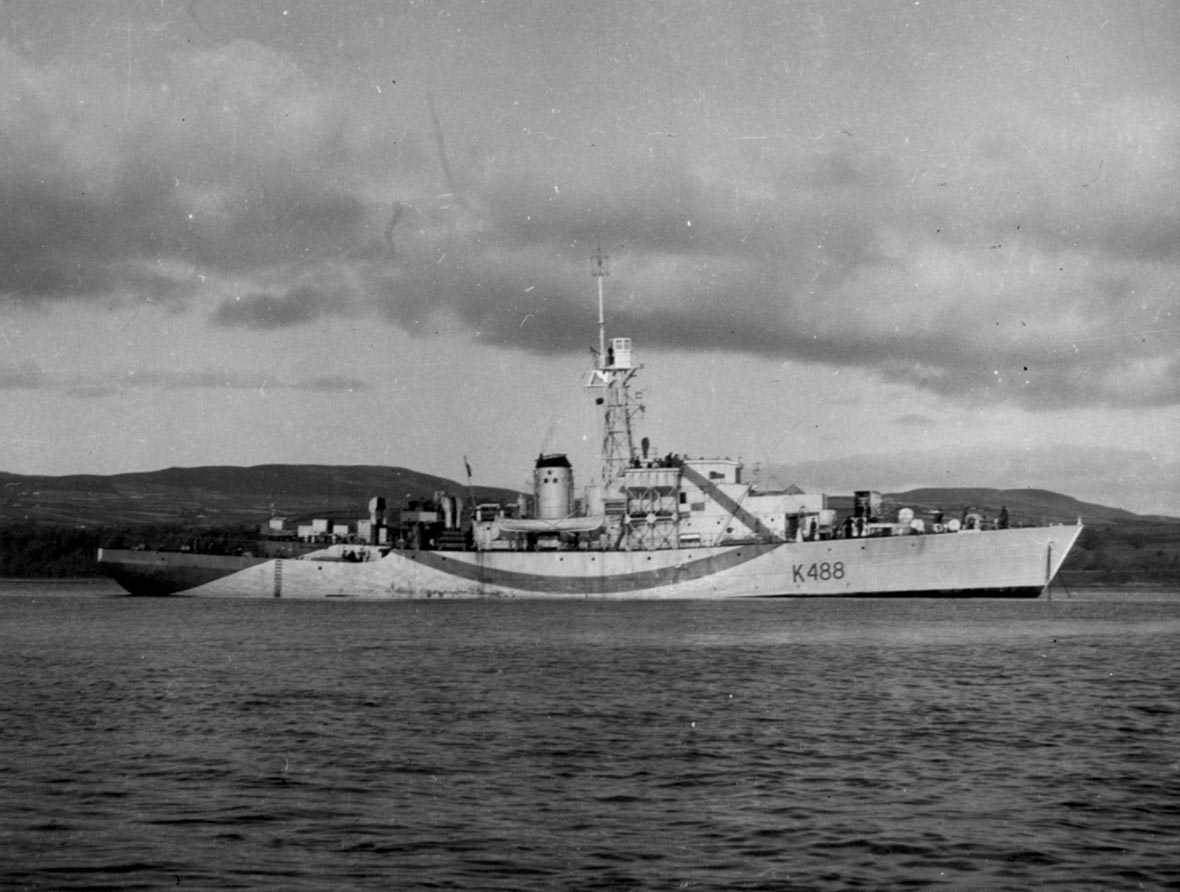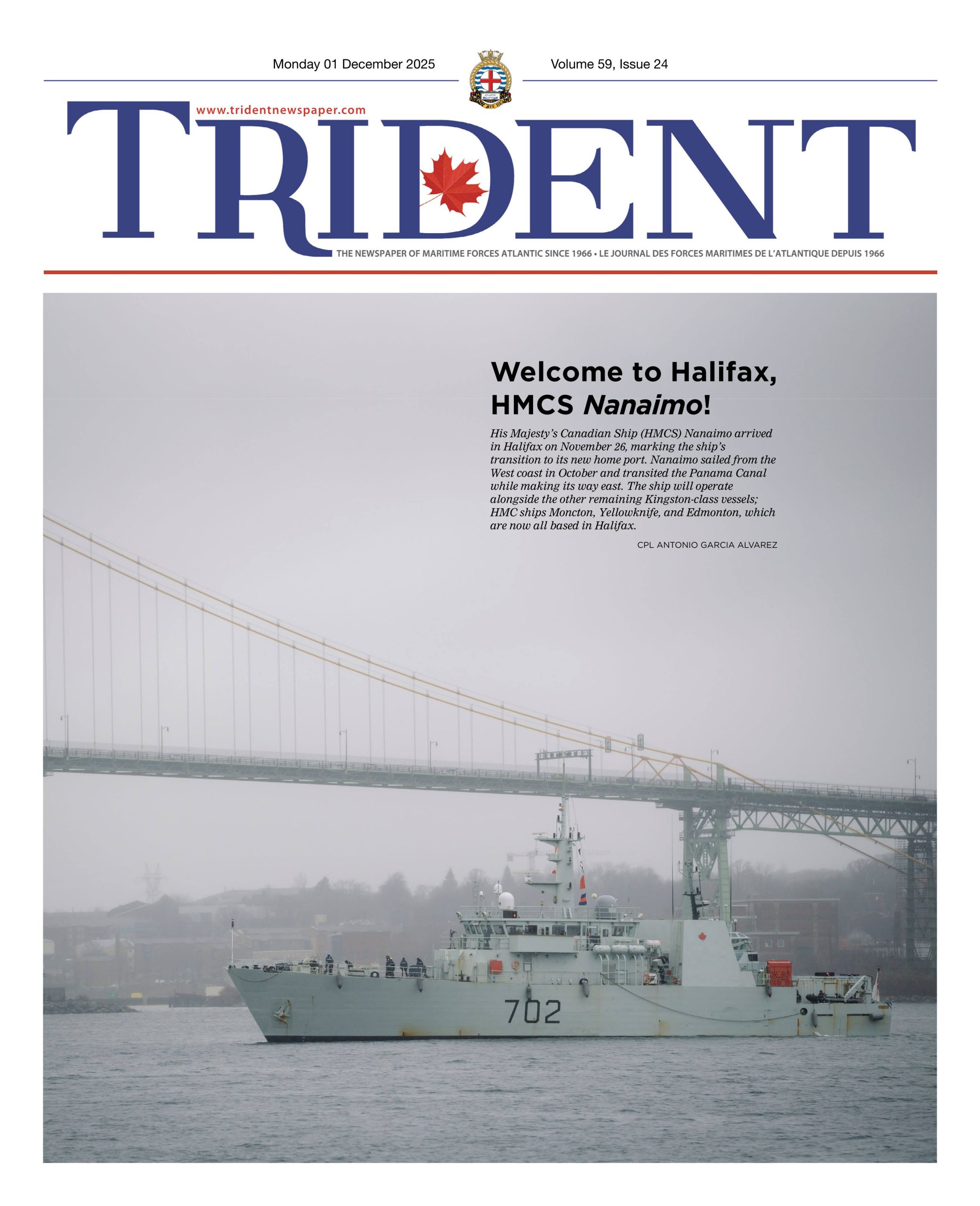
DND
Key events of the Battle of the Atlantic: December
By CPO1 (ret’d) Pat Devenish,
Canadian Naval Memorial Trust
December 10, 1939: 7,400 scantily equipped, hastily raised and poorly trained men of the 1st Canadian Division sail from Halifax for Britain. This is the first contingent of troops since Canada’s declaration of war on Germany (September 10th). HMC Ships Ottawa, Restigouche, Fraser and St. Laurent lead that first of many troop convoys of recently converted liners under the designation TC-1 to a point off of Halifax where they are met by a Royal Navy escort.
December 1, 1940: HMCS Saguenay, escorting a convoy 300 miles west of Ireland is hit by a torpedo fired by the Italian submarine Argo. Her bow is smashed, separates, then sinks and at noon the next day she hits a mine in the Irish Sea off the Isle of Man. Twenty-three men are dead and 90 casualties are transferred to the destroyer HMS Highlander and by December 5, with a skeleton crew, she reaches the safety of harbour under tow. Saguenay is the first Canadian warship to be torpedoed by an enemy submarine.
Note: Examination of post-war records indicates that the Captain of Argo was decorated with the German Oak Leaves’for the destruction of this ‘cruiser’.
December 7, 1940: After running aground in the Bristol Channel, the Canadian sailing vessel Watkins F. Nisbet is later salvaged and scrapped.
December 1, 1941: Based on an isolated case and an unofficial experiment originating on the corvette HMCS Matapedia, the term “Unfit Sea duty-Chronic seasickness” is coined. Developed from this series of events is a concoction of hyoscine hydrogen bromide, hyoscyamine hydrogen bromide and ethyl B-methyl allyl thiobarbituric acid into pill No. 2-183-a simple derivative of gravol-a seasickness pill.
December 7, 1941: While on escort duty with convoy SC 58, HMCS Windflower is accidentally rammed by the Dutch freighter Zypenberg in a foggy encounter off Newfoundland’s Grand Banks. Only the second trip for the new ship and crew, she promptly sinks with the loss of 23 crew.
December 12, 1941: The Canadian merchantman Neresus disappears in the Caribbean. The weather is clear and no U-boats have ever been confirmed in the vicinity.
December 20, 1941: HMCS Adversus sinks but is safely abandoned by the auxiliary patrol vessel’s 16 crew after grounding off Liverpool, Nova Scotia in a gale. Adversus is manned by the RCMP and had been used to patrol Nova Scotia’s south shore searching for German submarines attempting to land saboteurs and/or spies.
December 26, 1942: After nightfall, convoy ONS-154 bound for New York from Britain with an all-Canadian escort is attacked by a wolf pack numbering at least 20 U-boats. Over the course of the next two days, 14 ships are sunk and more than 100 merchant and naval seaman are dead. HMC Ships St. Laurent, Chilliwack, Shediac, Napanee and Battleford are not able to confirm any U-boat sinkings however the pack is finally driven off and 32 merchant ships arrive in port to be loaded with their precious cargo and sent off into the dark North Atlantic to return to England. Note: Postwar examinations of German records confirm the loss of U-356 in the early morning hours of the 27th.
December 3, 1944: While enroute from the Barbados to St John, New Brunswick, the 5500 ton Canadian merchantman Cornwallis is sunk off Portland, Maine by U-1230 with a loss of 43 of a crew of 48. U-1230, on its only cruise, was part of Operation Elster (Magpie) and succeeded in landing two German spies at Hancock Point in the Gulf of Maine. Both spies were captured by US authorities.
December 10, 1944: After being damaged by a mine in the eastern Mediterranean off the coast of Greece, while support government loyal forces in Greece’s civil war following liberation, the RCN infantry landing ship HMCS Prince David is towed to North Africa for repairs. After 4 weeks in Bizerta, Tunisia, a patch was fitted to the roughly 5 by 4 metre hole and she sailed for Gibraltar.
December 24, 1944: HMCS Clayoquot, while taking station on convoy XB 139 just two miles off Sambro Light off the entrance to Halifax harbour, is torpedoed and sunk by U-806, losing 8 of a crew of 84.
December 27, 1944: In the frigid water of the North Atlantic, another small yet vital victory is chalked up as the Castle class corvette HMCS St. Thomas sinks U-877. The submarine was disabled by the corvette’s squid mortar and sank after her crew abandoned ship. All 56 crew were subsequently rescued by St. Thomas.






